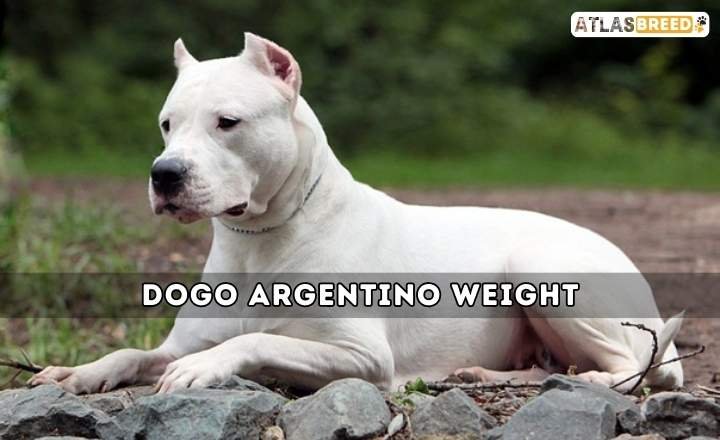Labrador Retriever Colors are as diverse as the breed itself, showcasing a range of shades from classic black and yellow to rich chocolate and even rare silver. This variety isn’t just eye-catching—it’s a fascinating insight into the genetics that make each Labrador unique.
Understanding these genetic factors can deepen your appreciation for these loyal companions and reveal how their beautiful coats come to be. Let dive into the vibrant world of Labrador Retriever Colors and the genetic magic behind them!
The Labrador Retriever Color Genetics
The Labrador Retriever often springs to mind a loyal companion with an unquenchable zest for life. But beyond their playful personalities and unparalleled affection lies a fascinating spectrum of colors that adds depth to this beloved breed.

From the rich, golden hues of a sunlit afternoon to the sleek, midnight blacks reminiscent of moonlit nights, Labrador Retrievers come in an array of shades that can leave even seasoned dog enthusiasts captivated.
What Are The Three Colors Of Labrador Retrievers
Labrador Retrievers are celebrated not just for their friendly demeanor and intelligence but also for their distinct coat colors:
- Yellow
- Black
- Chocolate
Each of these hues carries its own unique charm and can influence how they fit into various family dynamics or lifestyles. Yellow Labs range from pale cream to a deep gold; their sunny disposition often mirrors their vibrant coats.
This color, often associated with warmth and happiness, tends to attract families looking for an uplifting companion.
American Kennel Club Approved Labrador Retriever Colors
The rich tapestry of Labrador Retriever colors has deep roots that trace back to the Duck Creek Kennel Club in England, where breeding practices were meticulously documented. This club not only established the benchmarks for color standards but also emphasized the importance of temperament and versatility in these beloved dogs.

While the well-known shades of black, yellow, and chocolate are widely recognized today, it’s fascinating to delve into how these colors emerged through intentional selection based on both functionality and aesthetic appeal.
Emerging from utilitarian beginnings as hunting companions, Labradors were bred not just for their striking coats but for their unmatched ability to retrieve game from water and land.
The Black Labradors
Black Labradors, one of the three officially recognized colors by the American Kennel Club (AKC) for Labrador Retrievers, possess an elegance that transcends their classic beauty.
Their striking black coats, which may gleam like onyx under the sun, hold a captivating originality reflecting both their playful nature and loyal disposition.

Often misunderstood as merely shadowy companions standing in the background of more flamboyant colors like yellow or chocolate, Black Labradors are rich in personality.
Many owners attest to their attentive and perceptive characteristics that make them not only wonderful pets but also exceptional service dogs.
The Chocolate Labrador
The Chocolate Labrador, one of the three recognized colors in the Labrador Retriever breed, is often celebrated for its striking rich brown coat that ranges from light to deep chocolate hues. This vibrant coloration not only adds to their visual appeal but serves functional purposes as well.

Historically, these dogs were bred for hunting and retrieving game; their dark coats provided excellent camouflage against the earthy tones of forests and wetlands, allowing them to blend seamlessly into their surroundings while serving alongside hunters.
The Yellow Labrador
The Yellow Labrador, with its sunny demeanor and iconic appearance, stands out among the various Labrador Retriever colors. This breed is not only known for its cheerful yellow coat but also for its remarkable versatility.
Scientific studies suggest that color may influence perceptions; thus owning or engaging with a Yellow Labrador could unconsciously brighten your day! Their vibrant energy coupled with an eagerness to please results in an engaging interaction that transcends mere companionships.
The Red Fox Labrador
The Red Fox Labrador, a striking variation of the classic Labrador Retriever, stands out not just for its rich hue but also for the unique personality traits often associated with this particular color.

Unlike the traditional black or yellow Labs, Red Fox Labradors showcase a deep copper-red coat that can evoke feelings of warmth and vitality. This vibrant coloring is not merely superficial.
It reflects an underlying vitality and enthusiasm commonly found in these dogs. Their playful demeanor coupled with their affectionate nature makes them exceptional family companions.
Labrador Retriever Colors Not Accepted By The American Kennel Club
Labrador Retrievers are beloved for their friendly demeanor and versatility, but not all colors found in this breed meet the American Kennel Club (AKC) standards.
While the classic hues of black, yellow, and chocolate dominate the show rings, variations like silver or charcoal arise from a dilute gene mutation—a harmless alteration that some argue adds additional charm to these dogs.
This diluted coloration stems from a genetic variation rather than any artificial breeding process; It currently exists outside the scope of AKC recognition.
The Silver Labrador Retriever
The Silver Labrador Retriever has become a captivating subject of debate among dog enthusiasts and breeders alike.
While some argue that this striking color variation results from a purposeful breeding process, others believe it stems from the dilution of the traditional chocolate Labrador’s coat.

Embrace the idea that each Silver Lab is not merely defined by its distinctive hue; rather, it’s its unwavering love for playtime in muddy parks or quiet evenings curled up on your feet that truly highlights what makes them special as cherished companions in today’s vibrant canine community.
The Champagne Labrador
The Champagne Labrador is a captivating variation of the classic breed, known for its unique, warm-hued coat. This color is often described as a soft beige or light fawn with subtle golden undertones, evoking images of creamy champagne in sunlight.
These Labradors carry the same delightful temperament that has made their chocolate and black counterparts so popular. Their adaptability and affectionate nature make them ideal family pets and exceptional companions for those seeking friendship and loyalty.
The Charcoal Labrador
The Charcoal Labrador, a striking variant of the beloved breed, has garnered attention not just for its unique color but also for the intriguing traits that come with it. Often mistaken for their silver counterparts, Charcoal Labs boast a rich blend of dark gray hues that can range from deep slate to light ash.

This captivating pigmentation is a result of specific genetic combinations that influence coat coloration—traits that not only set them apart visually but also hint at an interesting lineage linking them to other breeds.
The Eumelanin Gene In Labradors
The eumelanin gene plays a pivotal role in determining the coat color of Labradors, influencing not only their appearance but also shedding light on their genetic health. This gene is responsible for producing black and chocolate pigments, resulting in the beloved rich hues that exemplify this breed’s charm.
Variations in this gene can lead to unexpected colors or markings, stirring intrigue among breeders and enthusiasts alike who seek to understand the deeper implications of these genetic traits.
Health Implications And Coat Colors In Labradors
Health issues may vary in different Labradors. As Miniature Labrador Retrievers are a smaller variant of the classic breed, with the same friendly disposition and intelligence. They come in a range of colors, including the seven standard Labrador Retriever colors: black, yellow (which can range from light cream to fox red), chocolate, and their variations. Whether large or miniature, all Labs share the same lovable traits and versatility.

Health Implications
- Hip Dysplasia: Common in Labradors, especially in certain coat lines.
- Obesity: Labradors have a tendency to gain weight, which can lead to various health issues.
- Exercise-Induced Collapse (EIC): More prevalent in some coat colors due to genetic predisposition.
- Ear Infections: Labradors with floppy ears are prone to infections, regardless of coat color.
- Skin Allergies: Often seen in Labradors, can be influenced by coat type and color.
Coat Colors in Labradors
Labrador Retrievers come in three standard coat colors: black, yellow, and chocolate. Each color is influenced by different genetic factors, but all share the same breed characteristics.
- Black Labradors: Often considered the most common, known for their glossy coat.
- Yellow Labradors: Color ranges from pale cream to fox red, often associated with service and therapy work.
- Chocolate Labradors: Known for their rich brown coat, they may have a slightly different temperament due to different breeding lines.
The genetics behind coat color can also play a role in a Labrador’s overall health and temperament. While all Labradors share a loving and friendly nature, understanding the nuances in their coat color can provide insights into their care and management.
Conclusion
The vibrant array of Labrador Retriever colors is not only visually captivating but also a fascinating product of genetics. Understanding the underlying genetic principles helps us appreciate the diversity within this beloved breed, from the classic blacks and yellows to the striking chocolates and beyond.
Each color tells a story about ancestry and breeding practices that have shaped these loyal companions. Whether you’re a devoted Labrador owner or considering adding one to your family, exploring their genetic makeup can enhance your appreciation for these wonderful dogs.
FAQ’s
What is the rare color of Labradors?
The rarest color of Labradors is silver, which is a diluted version of the chocolate coat.
What color Labrador is most expensive?
Chocolate Labradors are often the most expensive due to their relative rarity and high demand.
Which color Labrador lives the longest?
Yellow Labradors are generally considered to live the longest, though individual lifespan can vary based on genetics, health, and care rather than coat color alone.






